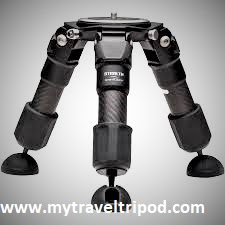How To choose Best Travel Tripod
Of course, it is most basic with a tripod to keep the camera
stable. If not, it's time to find someone who does. As a rule, larger and
heavier places will work better, but larger and heavier places are not suitable
for travel. As a result, stand manufacturers have placed great emphasis on
making the stand that holds the camera in the smallest and ultralight tripod for backpacking .
Compact
One of the most important innovations in the compact ride
was Gitzo: a system for bending the legs in the center column and head. It
works well and makes the package much more compact. Most of the current stands
now use this system.
Extended height
Normally, the stand must reach a comfortable shooting height
when selecting a best travel tripod when standing. This is the case less with these light
places. The more a rack extends, the more vibrations are amplified. This is
especially true for the expansion of the central column. With this type of
stand I usually do not stretch the center pole, if not necessary, because they
are so stable that the camera is as close as possible to the top of the legs.
Of course, it results in a much less comfortable firing height, but the
benefits of stability are worth it.
Price
The legs and head usually have different costs. The most
important thing in practice is the bottom of the two. With the legs designed
for 100 $ and 15 $ heads, the practical weight of sending the package
is 15 lbs.
But you don't want to take the weight literally. A 15 pound
rating does not mean that you will put a 15 pound camera on it. It is unlikely
that the center of gravity of the camera is just over half the head and legs.
In practice, the weight is thrown in both directions. The damping of vibrations
is also a crucial factor. A 15-pound stand must hold a 15-pound camera
securely, but it is not the same if it is kept quiet.
Therefore, if you choose a tripod, you really have a stand
with a higher load capacity than the configuration of the camera you want to
use.
Choosing the best budget Travel Tripod is your first priority.
Head Many of the items offered here come with the fluid head tripod of
the stand. In most cases, but not all, the head is removable, so you can
replace it with another if needed. For this type of stand, the spherical link
is the de facto standard. None of these sites are suitable for use with a rack
head, especially since the legs are usually easy to move or bend as they move
and tilt.
Blocking mechanisms
Most people today have hollow legs that contract together.
They are usually in four or five sections. There are two main types of blocking
mechanisms. The old system uses a lever system. The nice thing about this
system is that it is reliable and can even solve the problem when the blocking
is loose. The downside is that they attach a strap to the seat and a set of
levers that protrude and hang.
Many use a new generation of locking mechanisms that offer
rotation locking. The advantage is that they are thin and are relatively empty
and are very quick to use. The disadvantage is that they can be more sensitive
to dust, dirt or clays, which affects the effectiveness of the lock. It is a
goal that the manufacturers strive to follow strategies to prevent dust and
dirt.
Camera type
The camera you want
to use on the stand is crucial. Almost all of these are good with smaller and
lighter cameras, such as micro 4/3 systems or without mirrors. Others sit on an
edge that is useful for larger and heavier digital mirror reflections. If you
plan to use phone lenses, you need a more stable stand for two reasons than if
you only use wide-angle lenses: Telephoto lenses are usually heavier and
optical magnification also increases the smallest movement.
Carbon fiber vs aluminum tripod
For the most part, I focus on carbon fiber stands. In some cases,
there are versions of aluminum or alloy, which are usually slightly cheaper and
may vary depending on the maximum load they can withstand the carbon dioxide
version. Carbon generally has a strength / weight ratio much higher than
aluminum.
But not all carbon fibers are the same. Some advanced models
use higher quality materials that can be lighter, stronger and stiffer.
Similarly, there are different types of aluminum and alloys that have different
weight and strength properties.
Carbon fiber and aluminum also absorb vibrations in
different ways. Aluminum can be very stiff, but it can also cause vibrations
that resonate in the legs and are counterproductive. Carbon fibers can also be
very rigid, but they can also have vibration damping properties.
Usually carbon fibers tend to be lighter and more resistant.
It is generally more expensive than the corresponding aluminum version,
although the price gap has declined significantly in recent years, as the differences
and prices fall.
Read more: Best Tripod under 100
Read more: Best Tripod under 100
Other Features
Some sites have other features that can make them
attractive. Many come with their own transport bag, which can be very useful
for travel. Some come with a system where you remove one leg and the central
bar and connect both to a monopod.




Comments
Post a Comment